Eucalyptus Trees Removal
I saw the stand of large trees in the original real estate agent’s photos of the property prior to my purchase, but I couldn’t tell what type of trees they were. When I first met with Scion in August 2022 to discuss my idea to plant Kauri trees on the land, several of the scientists thought they were Australian eucalyptus trees. Following that meeting in Rotorua, I headed south to Taieri Beach for my first look at the property. Scion’s suspicions were confirmed. If I was going to create an indigenous forest, then the Australian gum trees had to go.
Finding someone to remove the trees was more difficult than I thought. Two dozen trees does not a forest make, and logging contractors drop hundreds or thousands of trees when they come to site. A casual chainsaw user might cut the trees, but the job required expertise to protect both the existing indigenous forest and the fence line running through the middle of the stand. Heavy equipment was also required to move the logs. A professional logging contractor was required.
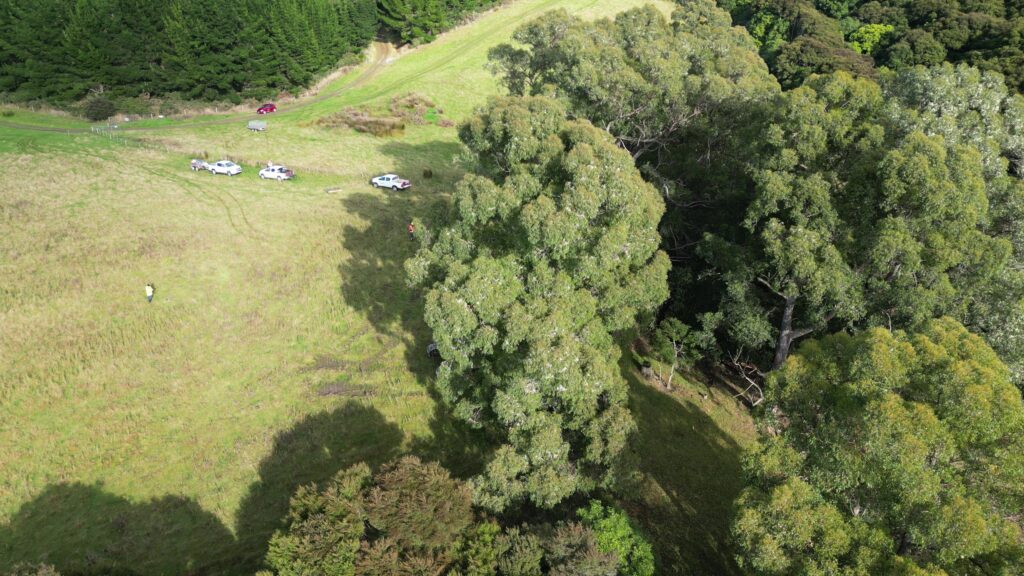
Paul Greaves my eastern boundary neighbour, has a stand of pine trees that were ready for felling. I arranged to piggyback on their job (once the crew and equipment was on site), adding my eucalyptus trees to his scope of work. But the log price was never high enough for Paul to fell his trees.
My trees are partly located in Area 2 of my property, which is scheduled for planting Kauri nurse trees in May 2024. This meant that I had a hard deadline. Finding a contractor and removing my trees was becoming a real problem. I was eventually put in touch with Steve Jones Logging, who had a look at the stand and agreed to remove the trees.
I thought that Australian hardwood would have utility as fence palings for stockyards, landscaping borders or something similar, but many of my trees were gnarly old trees with irregular shapes. Steve Jones said the only option was to break the trees down for firewood. It was disappointing that the best that could happen to the resource was to send them up a chimney. As the trees came down, Steve showed me how the timber split. I could see how milling the timber into wood planks wasn’t viable.
Steve was working in Palmerston, then Milton – getting closer. He scheduled 3 days for me in mid March, so I booked my flights from Melbourne to be on site for the removal.
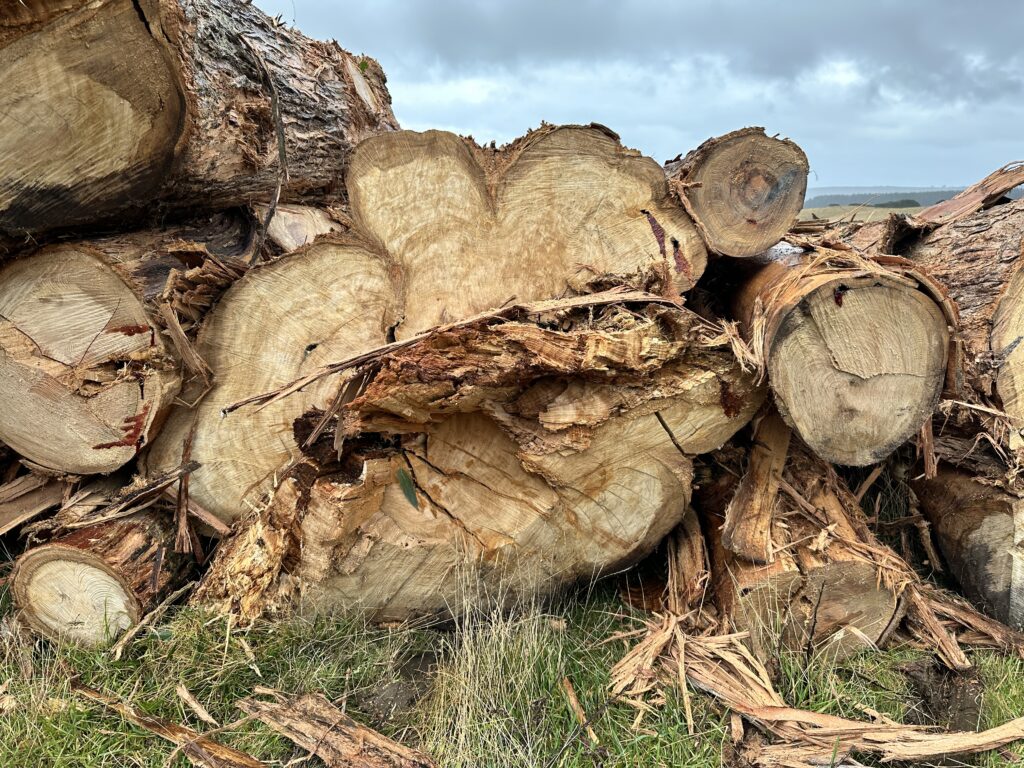
Steve brought his tracked crawler and grapple to rip off branches and maneuver the trees once they were on the ground. Critically, it was also used to push trees and pull a wire rope, guiding the tree fall direction away from the fence that bisected the stand, and the existing indigenous forest.
The largest tree had a 1.7 m diameter truck. It took an hour to fell, leaving a large stump that may be re-purposed in the future as part of a rest area along the walking track. A rough tree ring count put the tree at 60 years old.
Steve’s crew were excellent, working always with proper safety precautions. They were always aware of each other’s location. There were no accidents, with everyone returning safely home each day. Everything went smoothly, with the trunks stacked for removal, and the slash left for me and my neighbours for firewood – years and years of firewood.
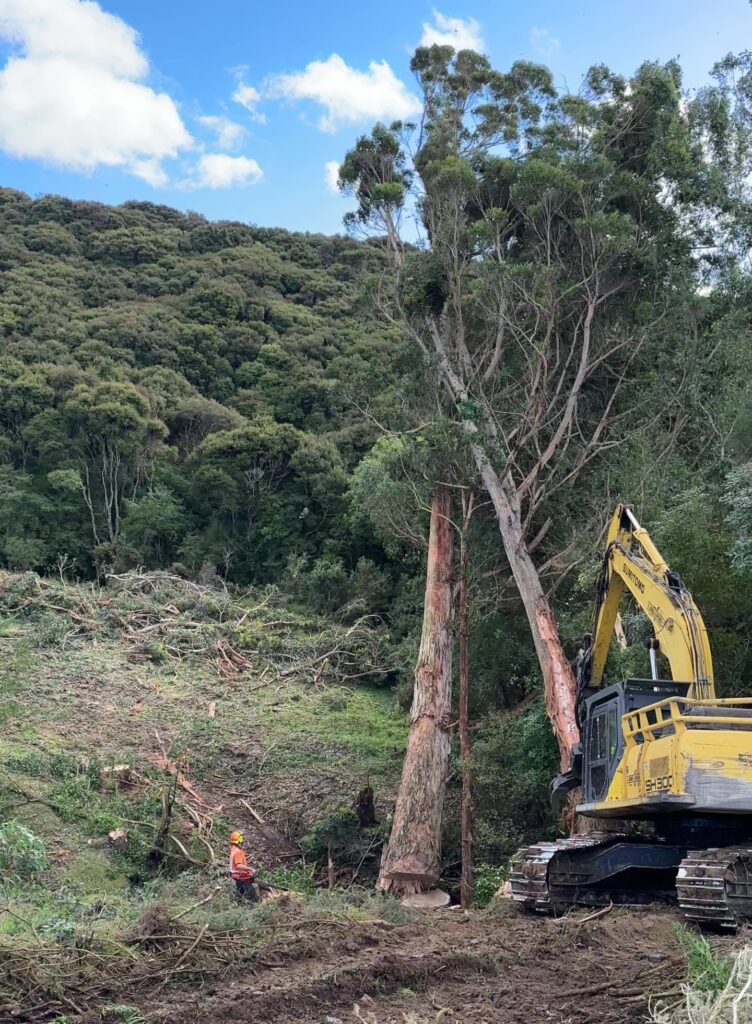
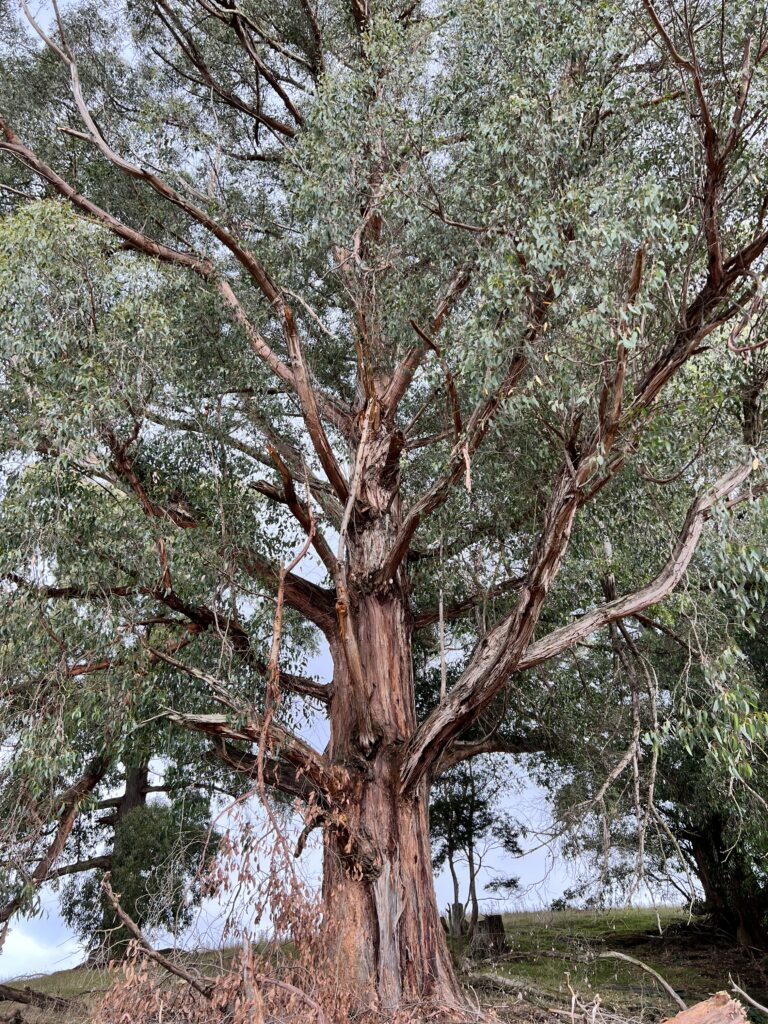
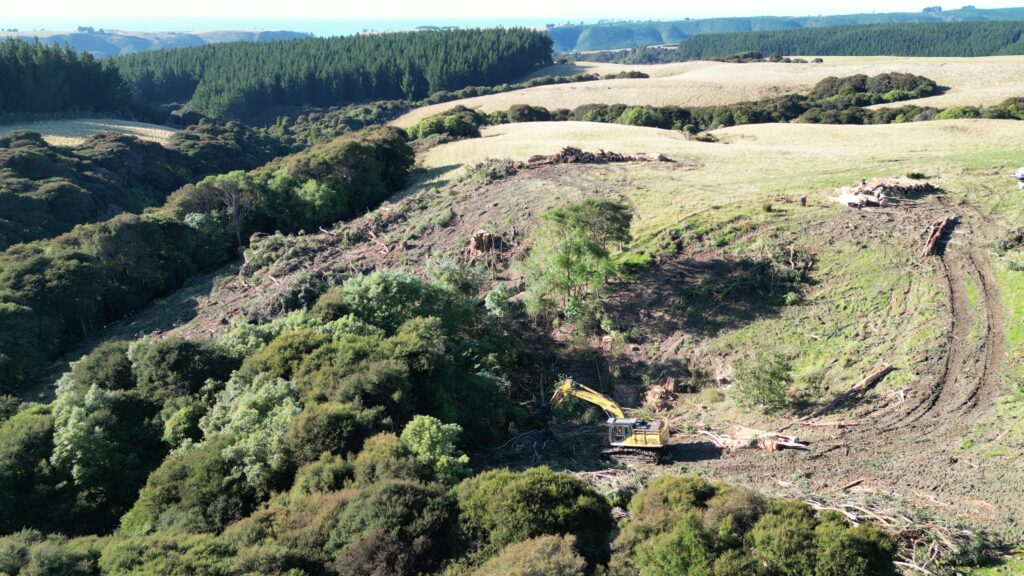
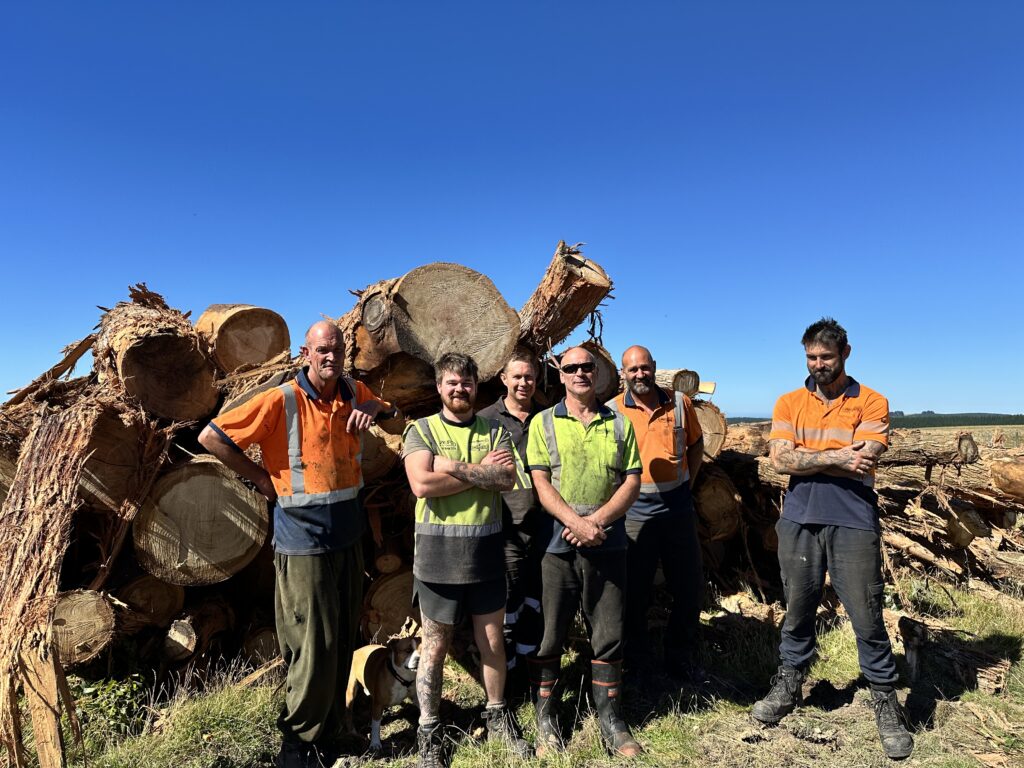
The video of eucalyptus tree removal is KT021, which can be viewed here or on the Kauri Trees YouTube channel.
04 April 2024
